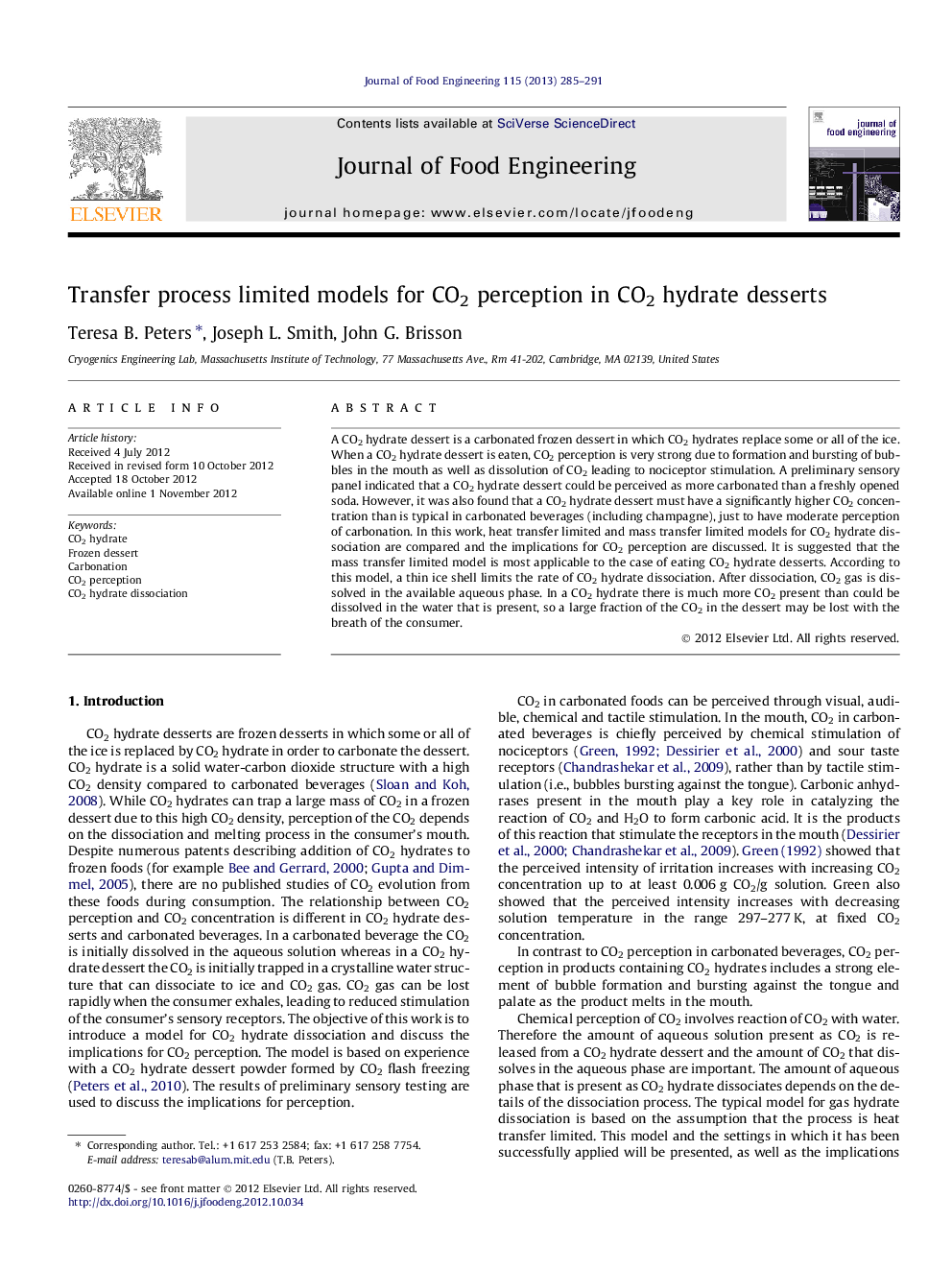| کد مقاله | کد نشریه | سال انتشار | مقاله انگلیسی | نسخه تمام متن |
|---|---|---|---|---|
| 223548 | 464382 | 2013 | 7 صفحه PDF | دانلود رایگان |

A CO2 hydrate dessert is a carbonated frozen dessert in which CO2 hydrates replace some or all of the ice. When a CO2 hydrate dessert is eaten, CO2 perception is very strong due to formation and bursting of bubbles in the mouth as well as dissolution of CO2 leading to nociceptor stimulation. A preliminary sensory panel indicated that a CO2 hydrate dessert could be perceived as more carbonated than a freshly opened soda. However, it was also found that a CO2 hydrate dessert must have a significantly higher CO2 concentration than is typical in carbonated beverages (including champagne), just to have moderate perception of carbonation. In this work, heat transfer limited and mass transfer limited models for CO2 hydrate dissociation are compared and the implications for CO2 perception are discussed. It is suggested that the mass transfer limited model is most applicable to the case of eating CO2 hydrate desserts. According to this model, a thin ice shell limits the rate of CO2 hydrate dissociation. After dissociation, CO2 gas is dissolved in the available aqueous phase. In a CO2 hydrate there is much more CO2 present than could be dissolved in the water that is present, so a large fraction of the CO2 in the dessert may be lost with the breath of the consumer.
► CO2 hydrate desserts can be perceived as more carbonated than freshly opened soda.
► A significantly higher CO2 concentration than is found in soda is required.
► CO2 perception may involve bubble formation in addition to nociceptor stimulation.
► A mass transfer limited CO2 hydrate dissociation model is most applicable.
► A large fraction of the CO2 in CO2 hydrate dessert is exhaled, instead of ingested.
Journal: Journal of Food Engineering - Volume 115, Issue 3, April 2013, Pages 285–291